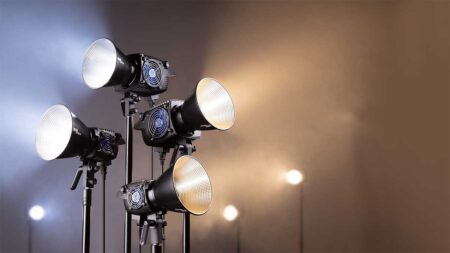To many professional photographers, full-frame cameras are considered the gold standard, synonymous with superior quality and performance. However, it’s time we rethink this belief, challenge the paradigm, and begin to view the smaller sensor cameras – such as APS-C and Micro Four Thirds systems – as not just alternatives, but viable primary choices in professional photography.
The perpetual debate of sensor size and image quality often overlooks the distinct and significant advantages that smaller sensor cameras bring to the table. These advantages extend well beyond just cost and size, offering unique benefits that, in certain scenarios, can actually outperform their full-frame counterparts.
Firstly, let’s talk about reach and depth of field. Wildlife photographers, for instance, often prefer APS-C cameras to full-frame. This is due to the crop factor that smaller sensors have which effectively increases the focal length. A 300mm lens on an APS-C camera has the same field of view as a 450mm lens on a full-frame camera, providing a deeper reach into the scene. Likewise, a 300mm lens on a Micro Four Thirds camera is equivalent to a 600mm – giving fantastic reach from a relatively small lens. This ‘zoom’ effect can be a powerful tool for photographers who need to capture details from a distance.
Additionally, the depth of field on smaller sensors is greater when compared at equivalent fields of view, making them more forgiving in achieving focus. This characteristic makes these cameras particularly well-suited for disciplines like wildlife, sports, and macro photography where enhanced depth can create more dynamic and engaging images.
Secondly, the smaller form factor of these cameras is not to be dismissed. A more compact and lightweight setup affords greater mobility, convenience, and discretion, which can be especially beneficial in genres such as street and travel photography. These cameras allow you to blend into your surroundings, be less intrusive, and carry your gear for longer periods of time without discomfort – often leading to more candid and spontaneous shots.
Moreover, the advancement in technology and image processing capabilities have significantly bridged the gap between smaller sensor and full-frame cameras. Many smaller sensor cameras now offer excellent low light performance, high dynamic range, and fast autofocus systems, traditionally associated only with full-frame setups. For instance, the noise performance at high ISOs has improved dramatically, making small sensor cameras increasingly capable in challenging light conditions.
In terms of video capabilities, smaller sensors often translate into less rolling shutter and better handheld stabilisation – highly desirable features in the world of videography.
It’s worth noting that smaller sensor cameras usually come with a lower price tag, making professional-quality photography more accessible. They also allow for smaller and lighter lenses, making it possible to carry a diverse range of focal lengths without adding much to your kit’s weight or size.
Finally, it’s important to consider the overall size and weight of your kit. Time and time again, we hear photographers tells us that this is the persuading argument when opting to go for an APS-C camera. Yes, some of the best full-frame cameras are small, but you still need a massive lens for it if you plan to shoot sport or wildlife.
This is not to diminish the undeniable merits of full-frame cameras. Rather, it’s a reminder that a different tool might be better suited for a specific task. With today’s technological advances, the sensor size should not be the sole or primary factor in determining the quality of a camera or the photographer using it. After all, the best camera is the one that enables you to best capture your vision, regardless of sensor size.
It’s time that small sensor cameras were taken seriously. Embrace the strengths they offer, explore the creative opportunities they provide, and, perhaps most importantly, acknowledge that a smaller sensor does not mean compromising on professionalism or image quality.
READ MORE
Camera buying guides: how to choose the best option for you
Camera sensor size explained


